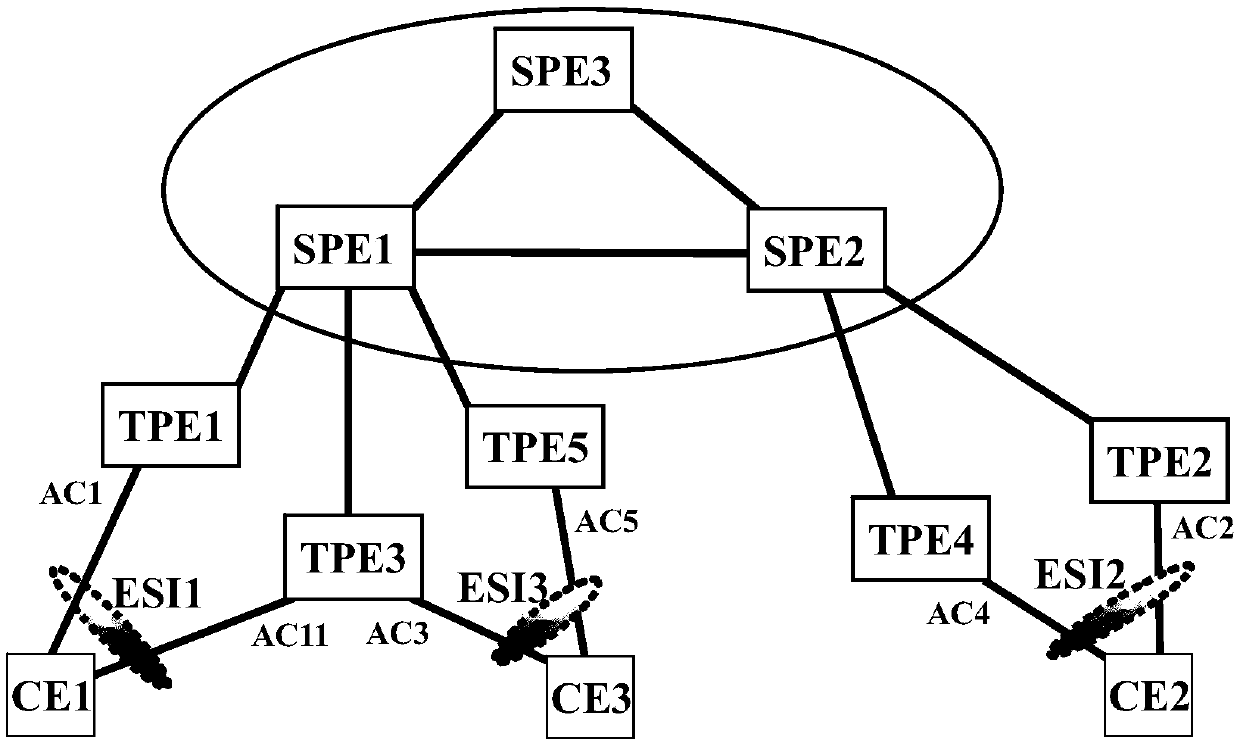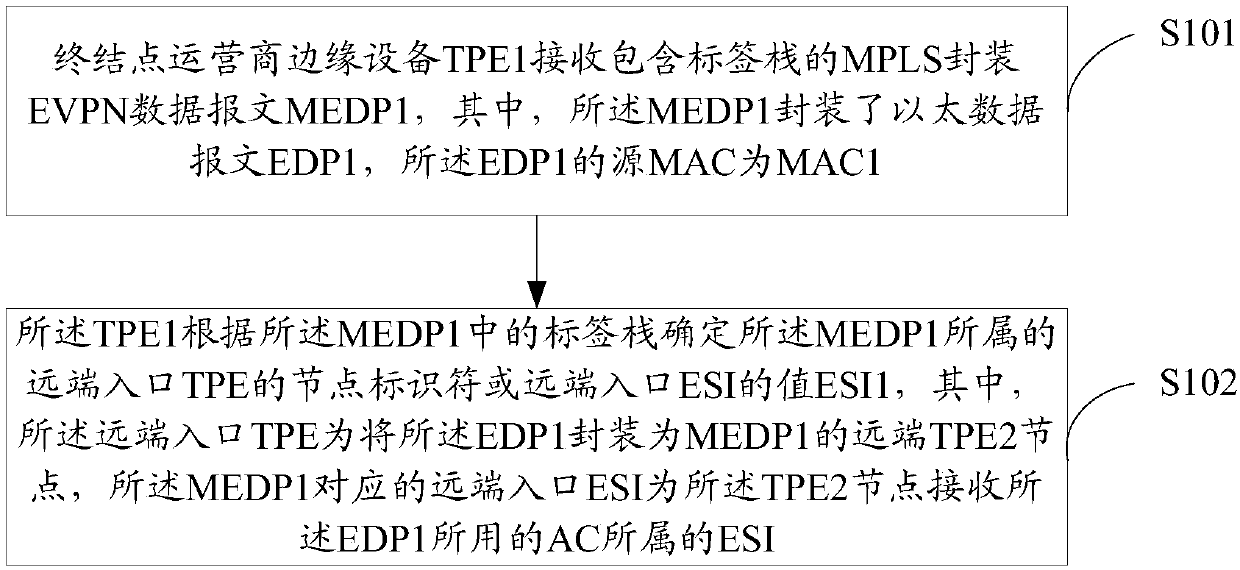Data message forwarding method and device
A technology of data message and purpose, applied in the field of communication, can solve the problems of high cost of 802.1ah and less deployment of 802.1ah
- Summary
- Abstract
- Description
- Claims
- Application Information
AI Technical Summary
Problems solved by technology
Method used
Image
Examples
Embodiment 1
[0152] figure 2 It is a flow chart of a method for forwarding data packets provided by an embodiment of the present invention, such as figure 2 shown, including:
[0153] Step S101: The terminal operator edge device TPE1 receives the MPLS-encapsulated EVPN data packet MEDP1 containing the label stack, wherein the MEDP1 encapsulates the Ethernet data packet EDP1, and the source MAC of the EDP1 is MAC1;
[0154] Step S102: The TPE1 determines the node identifier of the remote ingress TPE to which the MEDP1 belongs or the value ESI1 of the remote ingress ESI according to the label stack in the MEDP1, wherein the remote ingress TPE is the Encapsulated as a remote TPE2 node of MEDP1, the remote ingress ESI corresponding to the MEDP1 is the ESI to which the AC used by the TPE2 node to receive the EDP1 belongs;
[0155] Wherein, the TPE1 uses the remote ingress ESI for at least one of the following purposes:
[0156] When the remote ingress ESI of the MEDP1 is a specified value ...
Embodiment 2
[0166] The embodiment of the present invention also provides a method for forwarding data packets, including:
[0167] Termination point operator edge device TPE3 obtains unicast Ethernet data packet EDP3 from access circuit AC3, wherein said AC3 belongs to Ethernet segment identifier ESI3 and said AC3 is bound to Ethernet virtual private network EVPN broadcast domain BD1, so The destination MAC of EDP3 is MAC2;
[0168] The TPE3 finds the corresponding destination ESI4 or destination TPE5 with the binary group as a key value, and performs multi-protocol label switching MPLS encapsulation processing accordingly to generate a local entry ESI label , the context identifier label stack element LSE and the MPLS-encapsulated EVPN data packet MEDP3 of the multipoint-to-point MP2P outgoing label corresponding to the destination ESI or the destination TPE, and the context identifier LSE carries the information of the source node identifier;
[0169] The TPE3 forwards the MEDP3 to th...
Embodiment 3
[0183] The embodiment of the present invention also provides a method for routing message forwarding, including:
[0184] The switching point operator edge device SPE1 receives the EAD-ES route sent by TPE1 and carries the original ESI label and the next-hop ESI label, and performs route reflection in the way of replacing the next hop on the EAD-ES route, and rewrites the next-hop ESI label without rewriting the original ESI label.
[0185] Wherein, the new next-hop ESI label used for rewriting the next-hop ESI label conforms to the following rules: the new next-hop ESI label is a label of a downstream distribution mode, and is allocated by the SPE1 node; The new next-hop ESI label and the original next-hop ESI label form a label exchange operation on the forwarding plane, wherein the new next-hop ESI label is an incoming label, and the original next-hop ESI label is an outgoing label.
[0186] Through the description of the above embodiments, those skilled in the art can cle...
PUM
 Login to View More
Login to View More Abstract
Description
Claims
Application Information
 Login to View More
Login to View More - R&D
- Intellectual Property
- Life Sciences
- Materials
- Tech Scout
- Unparalleled Data Quality
- Higher Quality Content
- 60% Fewer Hallucinations
Browse by: Latest US Patents, China's latest patents, Technical Efficacy Thesaurus, Application Domain, Technology Topic, Popular Technical Reports.
© 2025 PatSnap. All rights reserved.Legal|Privacy policy|Modern Slavery Act Transparency Statement|Sitemap|About US| Contact US: help@patsnap.com



